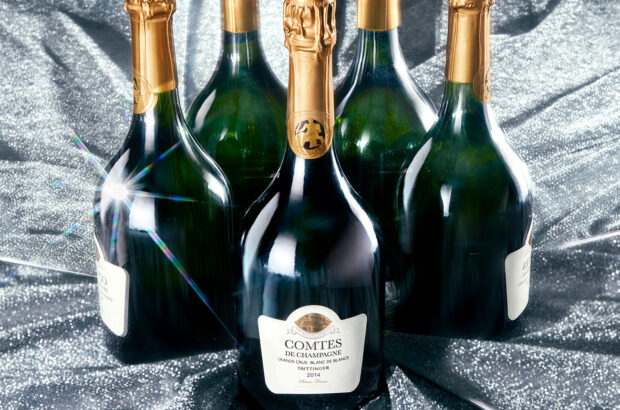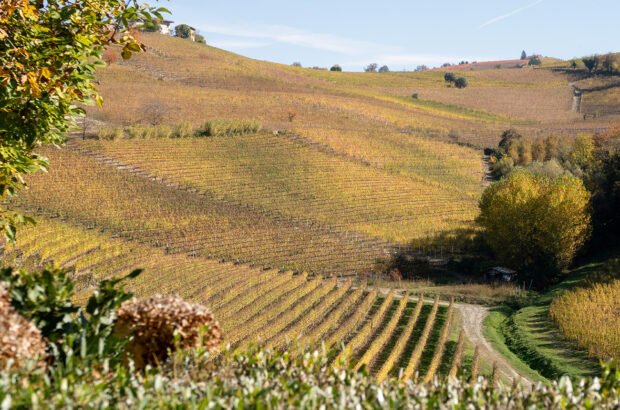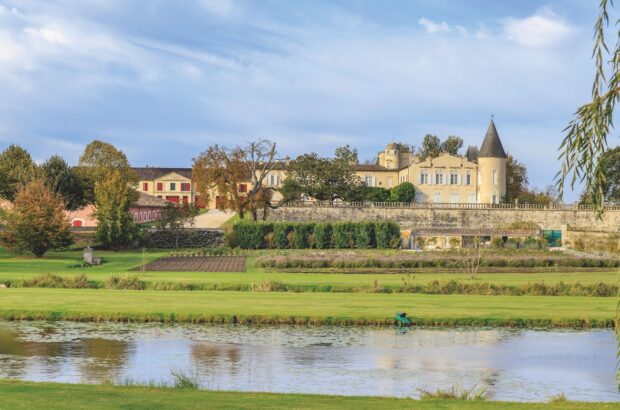Jane Anson looks at what's changed in St-Estèphe, and re-tastes 38 wines from 2014 - 'a vintage not to miss'....
Anson: Top St-Estèphe 2014 wines
Has any Médoc appellation seen more dynamic movement than St-Estèphe in the last few years? I would strongly argue no.
If there’s one statistic that makes this clear it’s that in the past decade, 20% of the appellation’s estates have changed hands.
Scroll down for Jane’s St-Estèphe 2014 tasting notes & scores
Among the most notable recent exchanges have been the Gardinier brothers selling Phelan-Segur to Belgian investor Philippe Van de Vyvere, Roederer selling Haut-Beausejour to Pierre Rousseau (who also purchased Lafitte Carcasset in 2015) and Pomys going over to Cos d’Estournel.
Jacky Lorenzetti of Lilian Ladouys picked up both Clauzet, from Baron Velge, and Tour de Pez, from the Bouchera family. Then there’s Bernard Magrez buying former Cru Arisan Château La Peyre (promptly renaming it as Clos Sanctus Perfectus).
At the same time Gonzargue Lurton has sold Château Domeyne to négociant house Ginestet, while Mahler Besse has sold a majority stake in Château Picard to fellow merchant Borie Manoux (owner Philippe Castéja already owns Beau Site), and Hong Kong company Long Faith International has bought Château Tour St Fort and is due to open an opulent chambres d’hotes and wine tourism centre later this year.
As with Pauillac, one key source of new estates comes from grape growers who were taking their fruit to the local cooperative cellar until recently. For example, Château Marceline took production back in-house in 2009, and Château Haut-Barron created its Haut-Medoc estate from former cooperative fruit in 2011, and its St-Estèphe more recently in 2014.
Thirty years ago the local cooperative took in around 200ha of grapes, while today it is closer to 35ha; in Pauillac the numbers stood at around 150ha at its height in the 1970s and 1980s and has today shrunk to 25ha. A more usual destination for these former cooperative vines is to existing châteaux who are consolidating and expanding their holdings – so Lilian Ladouys, Tour de Pez, Petit Bocq, Clauzet and Serilhan have all grown their vineyards in this way.
Much of this has been hugely healthy for the appellation, with repeated injections of capital and new ideas bringing better winemaking techniques, such as a desire to soften and round out those sometimes rustic tannins that plagued St-Estèphe’s reputation for years – a result of its soils, which share the gravels of Pauillac and St Julien but with more instances of clay both in the subsoils and at the surface, along with spots of limestone. The clay gives power and richness to the wines while maintaining freshness (some of the best 2003s came from here, for example), but can tend towards burliness if not tamed. The clay also translates into higher Merlot than in sibling communals – there is routinely 50% or more Merlot at a number of estates here, including La Commanderie, de Côme, Lilian Ladouys, Petit Bocq, Tour des Termes and L’Argilus de Roi.
One-level Cru Bourgeois
It’s not all good news though – I hear that some of the sales have been forced because of issues with the one-level Cru Bourgeois system, introduced in 2008 – essentially in dragging the prices of the more prestigious estates down by getting rid of the three-tier system.
With only five 1855 classifieds, St-Estèphe has always been a reliable source of some of the best Cru Bourgeois, so it was hit particularly hard by the levelling of the system when the Cru Bourgeois Superieur and Exceptionnel estates were removed. Out of the nine Cru Bourgeois Exceptionnels, four were in St-Estèphe, alongside 12 Cru Bourgeois Superieurs – more than any other communal Médoc AOC.
The fact that so many of the recent sales involve these names (all but Ormes de Pez have changed hands out of the Exceptionnels) perhaps indicates the resulting financial strain and also suggests why there is such enthusiasm from the chateaux for the three-level ranking being reintroduced in 2020.
What is undeniable is that there is a sense of renewal in the air in this corner of the Médoc peninsula. Add all of this to the fact that the appellation has enjoyed a run of good vintages and you start to see why this is a good time to get on board.
I have written several times about the success of the northern Médoc in 2014 – the Indian summer suited them perfectly, with many harvesting until 16 October, even up to 21 October in a few cases.
This was possible because there was significantly less rainfall here than in the southern Médoc and on the right bank, and after an extensive re-tasting of the wines last week, looking at 38 estates, I’m very happy to underline that this is a vintage not to miss in St-Estèphe. Rich brambly flavours abound, with tannins that are starting to soften and give the fruit free rein.
The wines
I found amazing consistency between the wines at the tasting. 87 was my lowest score and 96 my highest – very impressive for a horizontal that included 1855 classified growths right down to small Cru Artisans and beyond.
Many are starting to grow into their potential and this is reflected in the scores: I gave Calon Ségur 95 last year and the same now, but Lafon Rochet got 93 a year ago but 94 this time, and Cos Labory 91 a year ago but 92 now… exactly what you want with wines that are getting a few years of bottle age under their belt.
Top five best value
Many of the 38 wines tasted offer brilliant value, but these five below all scored well and sell for between €15 and €30 in France – and should be available for similar prices in the UK.
Château Andron Blanquet
Château Le Boscq
Château Ormes de Pez
Château Tour des Termes
Château de Côme
The tasting notes and scores for all 38 wines below are available exclusively to Decanter Premium members.
Top St-Estèphe 2014 wines:












